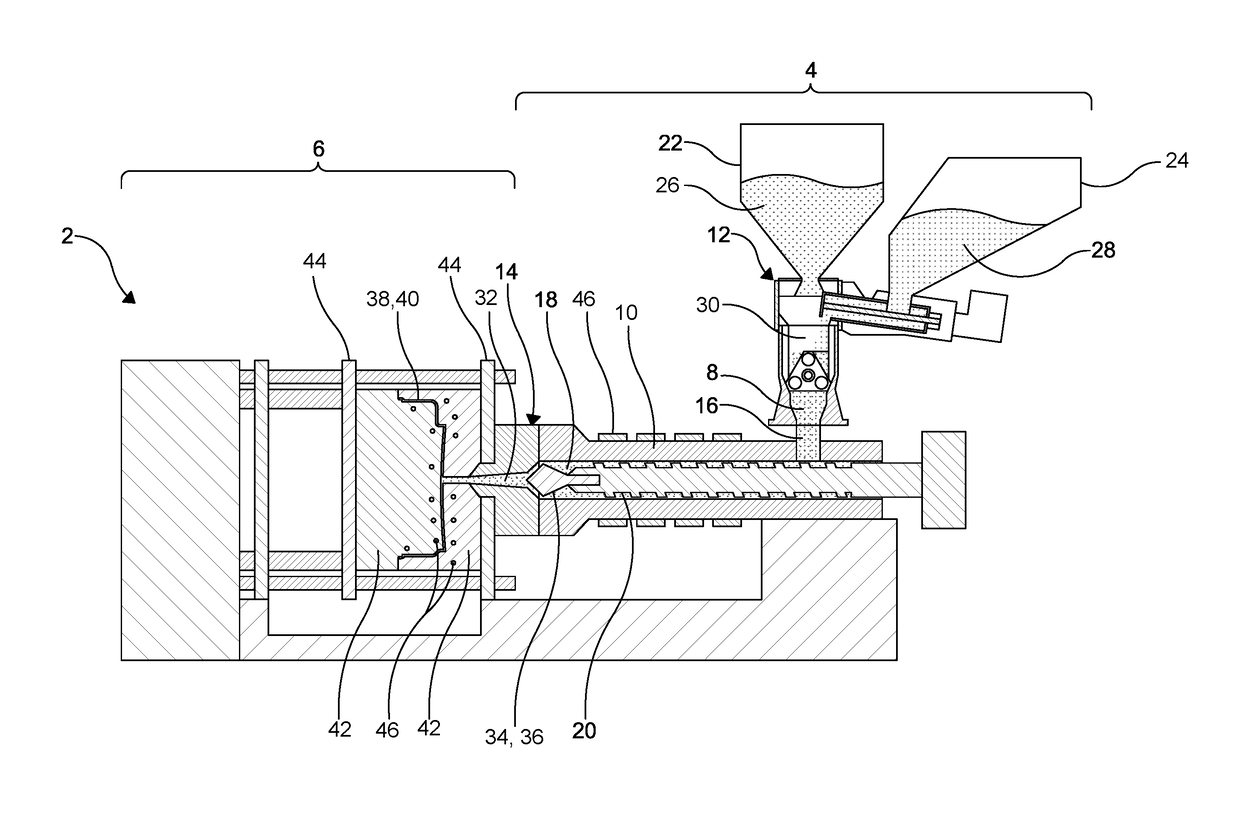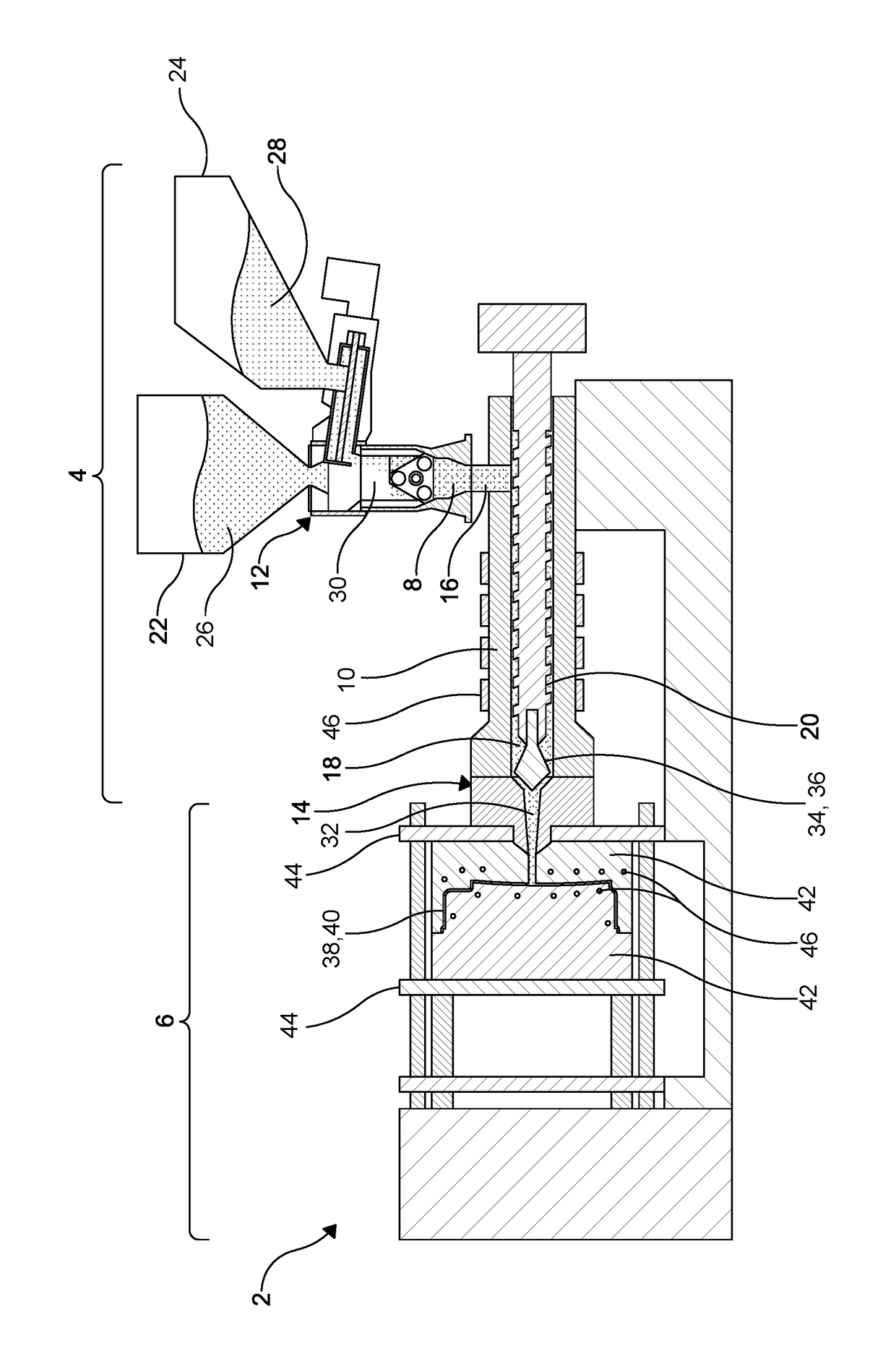Method for producing a climate control box
a technology for climate control boxes and boxes, which is applied in vehicle heating/cooling devices, transportation and packaging, and other domestic articles, etc. it can solve the problems of high capital investment in physical foaming processes, deformation and failure over the life cycle of components, and increase overall material costs, so as to minimize raw material costs and minimize inherent stress
- Summary
- Abstract
- Description
- Claims
- Application Information
AI Technical Summary
Benefits of technology
Problems solved by technology
Method used
Image
Examples
Embodiment Construction
[0018]The following detailed description and appended drawings describe and illustrate various embodiments of the invention. The description and drawings serve to enable one skilled in the art to make and use the invention, and are not intended to limit the scope of the invention in any manner. In respect of the methods disclosed, the steps presented are exemplary in nature, and thus, the order of the steps is not necessary or critical.
[0019]As shown in the FIGURE, a molding system 2 for carrying out an embodiment of the disclosure is shown. The molding system 2 includes an injector 4 and a mold 6 in fluid communication with each other, wherein the injector 4 is configured to provide a flow of a composition 8 to the mold 6.
[0020]The injector 4 includes a barrel 10, a feed system 12, and a head 14. The barrel 10 of the injector 4 includes at least one inlet 16 in fluid communication with the feed system 12, and an outlet 18 in communication with the head 14. The barrel 10 further inc...
PUM
| Property | Measurement | Unit |
|---|---|---|
| temperature | aaaaa | aaaaa |
| temperature | aaaaa | aaaaa |
| pressure | aaaaa | aaaaa |
Abstract
Description
Claims
Application Information
 Login to View More
Login to View More - R&D
- Intellectual Property
- Life Sciences
- Materials
- Tech Scout
- Unparalleled Data Quality
- Higher Quality Content
- 60% Fewer Hallucinations
Browse by: Latest US Patents, China's latest patents, Technical Efficacy Thesaurus, Application Domain, Technology Topic, Popular Technical Reports.
© 2025 PatSnap. All rights reserved.Legal|Privacy policy|Modern Slavery Act Transparency Statement|Sitemap|About US| Contact US: help@patsnap.com


